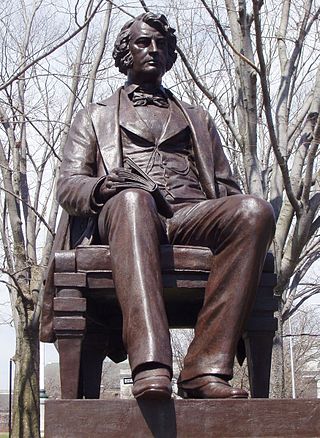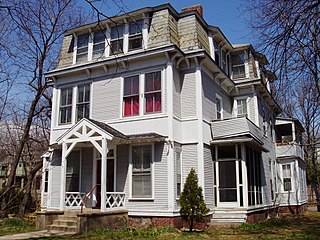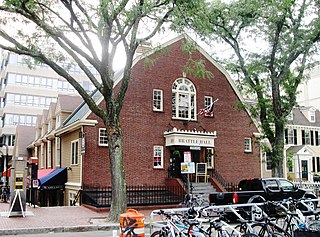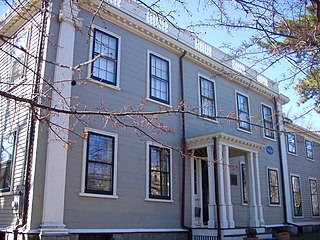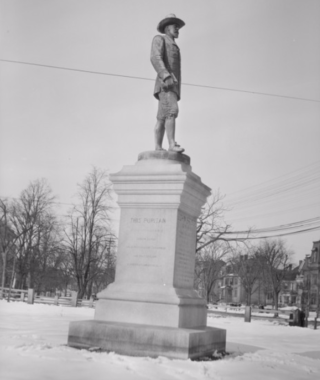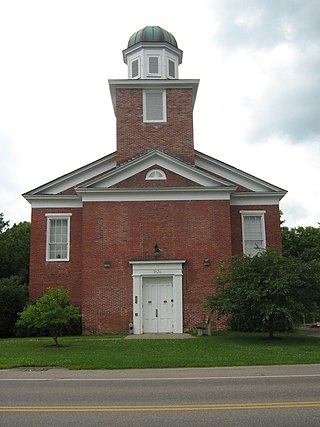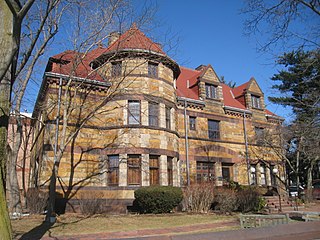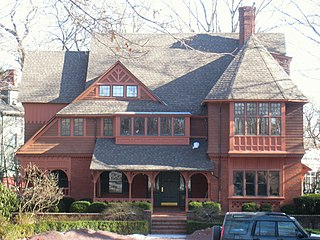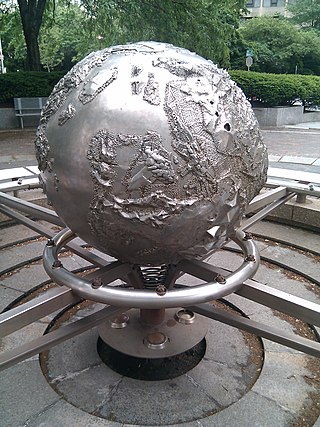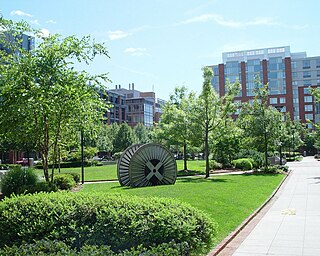29 Sights in Cambridge, United States (with Map and Images)
Legend
Welcome to your journey through the most beautiful sights in Cambridge, United States! Whether you want to discover the city's historical treasures or experience its modern highlights, you'll find everything your heart desires here. Be inspired by our selection and plan your unforgettable adventure in Cambridge. Dive into the diversity of this fascinating city and discover everything it has to offer.
Sightseeing Tours in Cambridge1. John Harvard Statue
John Harvard is an 1884 sculpture in bronze by Daniel Chester French at Harvard University in Cambridge, Massachusetts. It honors clergyman John Harvard (1607–1638), whose substantial deathbed bequest to the "schoale or Colledge" recently undertaken by the Massachusetts Bay Colony was so gratefully received that the Colony resolved "that the Colledge agreed upon formerly to bee built at Cambridg shalbee called Harvard Colledge." There being nothing to indicate what John Harvard had looked like, French took inspiration from a Harvard student collaterally descended from an early Harvard president.
2. Harvard Square
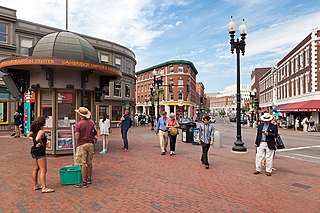
Harvard Square is a triangular plaza at the intersection of Massachusetts Avenue, Brattle Street and John F. Kennedy Street near the center of Cambridge, Massachusetts, United States. The term "Harvard Square" is also used to delineate the business district and Harvard University surrounding that intersection, which is the historic center of Cambridge. Adjacent to Harvard Yard, the historic heart of Harvard University, the Square functions as a commercial center for Harvard students, as well as residents of western Cambridge, the western and northern neighborhoods and the inner suburbs of Boston. The Square is served by Harvard station, a major MBTA Red Line subway and a bus transportation hub.
3. American Repertory Theater
The American Repertory Theater (A.R.T.) is a professional not-for-profit theater in Cambridge, Massachusetts. Founded in 1979 by Robert Brustein, the A.R.T. is known for its commitment to new American plays and music–theater explorations; to neglected works of the past; and to established classical texts reinterpreted in refreshing new ways. Over the past forty years it has garnered many of the nation's most distinguished awards, including a Pulitzer Prize (1982), a Tony Award (1986), and a Jujamcyn Award (1985). In 2002, the A.R.T. was the recipient of the National Theatre Conference's Outstanding Achievement Award, and it was named one of the top three theaters in the country by Time magazine in 2003. The A.R.T. is housed in the Loeb Drama Center at Harvard University, a building it shares with the Harvard-Radcliffe Dramatic Club. The A.R.T. operates the Institute for Advanced Theater Training.
4. Harvard Art Museums
The Harvard Art Museums are part of Harvard University and comprise three museums: the Fogg Museum, the Busch-Reisinger Museum, and the Arthur M. Sackler Museum, and four research centers: the Archaeological Exploration of Sardis, the Center for the Technical Study of Modern Art, the Harvard Art Museums Archives, and the Straus Center for Conservation and Technical Studies. The three museums that constitute the Harvard Art Museums were initially integrated into a single institution under the name Harvard University Art Museums in 1983. The word "University" was dropped from the institutional name in 2008.
5. The Hiker
The Hiker is a bronze statue created by Theo Alice Ruggles Kitson. It commemorates the American soldiers who fought in the Spanish–American War, the Boxer Rebellion, and the Philippine–American War. The first version of it was made for the University of Minnesota in 1906, but at least 50 copies were made, and were erected widely across the United States.
6. Saint Paul Catholic Church
St. Paul Church is a parish of the Roman Catholic Church located at 29 Mount Auburn Street near Harvard Square in Cambridge, Massachusetts, in the Archdiocese of Boston. As well as serving as the local parish church, it is the home of St. Paul's Choir School whose students serve as the choristers in the Choir of St. Paul's, and the Harvard Catholic Center serving the academic community of Harvard University.
Wikipedia: St. Paul Church (Cambridge, Massachusetts) (EN), Website
7. Peabody Museum of Archaeology and Ethnology
The Peabody Museum of Archaeology and Ethnology is a museum affiliated with Harvard University in Cambridge, Massachusetts, United States. Founded in 1866, the Peabody Museum is one of the oldest and largest museums focusing on anthropological material, with particular focus on the ethnography and archaeology of the Americas. The museum is caretaker to over 1.2 million objects, some 900 feet (270 m) of documents, 2,000 maps and site plans, and about 500,000 photographs. The museum is located at Divinity Avenue on the Harvard University campus. The museum is one of the four Harvard Museums of Science and Culture open to the public.
Wikipedia: Peabody Museum of Archaeology and Ethnology (EN), Website
8. Harvard College Observatory
The Harvard College Observatory (HCO) is an institution managing a complex of buildings and multiple instruments used for astronomical research by the Harvard University Department of Astronomy. It is located in Cambridge, Massachusetts, United States, and was founded in 1839. With the Smithsonian Astrophysical Observatory, it forms part of the Center for Astrophysics | Harvard & Smithsonian.
9. Christ Church
Christ Church, at Zero Garden Street in Cambridge, Massachusetts, U.S., is a parish of the Episcopal Diocese of Massachusetts. Built in 1760–61, it was designated a National Historic Landmark as one of the few buildings unambiguously attributable to Peter Harrison, the first formally trained architect to work in the British colonies.
10. Cambridge Common
Cambridge Common is a public park and National Historic Landmark in Cambridge, Massachusetts, United States. It is located near Harvard Square and borders on several parts of Harvard University. The north end of the park has a large playground. The park is maintained by the Cambridge Department of Public Works.
11. W15 MIT Chapel
The MIT Chapel is a non-denominational chapel designed by noted architect Eero Saarinen. It is located on the campus of the Massachusetts Institute of Technology in Cambridge, Massachusetts, next to Kresge Auditorium and the Kresge Oval, which Saarinen also designed. Though a small building, the Chapel is often noted as a successful example of mid-century modern architecture in the United States. Saarinen also designed the landscaping surrounding all three locations.
12. The First Parish in Cambridge
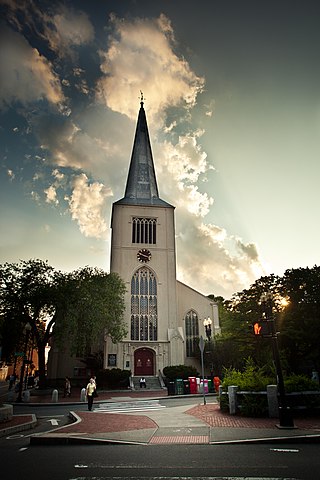
First Parish in Cambridge is a Unitarian Universalist church, located in Harvard Square in Cambridge, Massachusetts. It is a Welcoming Congregation and a member of the Unitarian Universalist Association. The church is notable for its almost 400-year history, which includes pivotal roles in the development of the early Massachusetts government, the creation of Harvard College, and the refinement of current liberal religious thought.
13. Harvard Bixi
The Harvard Bixi is a 17-foot high, 27 ton Chinese marble stele with a turtle pedestal located at Harvard University, north of Boylston Hall and west of Widener Library in Harvard Yard, in Cambridge, Massachusetts. The stele was presented to the university by the Chinese Harvard Alumni for its Tercentenary in September 1936.
14. Gift of the Wind
Gift of the Wind is a large-scale public kinetic sculpture, by Susumu Shingu, located in Porter Square, Cambridge, Massachusetts at the Porter, Massachusetts Bay Transportation Authority subway and commuter rail station. The artwork consists of a tall white pole with three red "wings" attached to the top that are "designed to shift in response to the movement of the wind, not only turning clockwise and counterclockwise, but tumbling over and over in various sequences". It is considered by some to be "Cambridge's most visible landmark".
15. Bertram Hall (Cabot)
Bertram Hall at Radcliffe College is an historic dormitory building on the Radcliffe Quadrangle of Harvard University at 53 Shepard Street in Cambridge, Massachusetts. Built in 1901, it was the first dormitory building constructed for Radcliffe College. The building is now one of the dormitories of Harvard's Cabot House. It was listed on the National Register of Historic Places in 1986.
Wikipedia: Bertram Hall (Radcliffe College) (EN), Heritage Website
16. Statue of Charles Sumner
A bronze statue of Charles Sumner, by sculptor Anne Whitney, is installed in General MacArthur Square in Cambridge, Massachusetts. The plaster model for the statue is on display indoors at the Watertown public library. The sculpture of Sumner, a popular local statesman, was commissioned by the Boston Art Committee shortly after his death in 1874.
Wikipedia: Statue of Charles Sumner (Cambridge, Massachusetts) (EN)
17. William Dean Howells House
The William Dean Howells House is a house built and occupied by American author William Dean Howells and family. It is located at 37 Concord Avenue, Cambridge, Massachusetts. The house was designed by Howell's wife, Elinor Mead, and occupied by the family from 1873 to 1878. Authors including Mark Twain, Henry James, Henry Wadsworth Longfellow, and Thomas Bailey Aldrich visited the Howells in this house, as did President James Garfield, and Helen Keller lived there afterwards while attending school.
Wikipedia: William Dean Howells House (Cambridge, Massachusetts) (EN)
18. Brattle Hall
Brattle Hall is a historic building along Brattle Street near Harvard Square in Cambridge, Massachusetts. It was constructed in 1889 for the Cambridge Social Union – established in 1871 – when that organization moved into the adjacent William Brattle House that year. Brattle Hall was built to house the organization's library, and to provide a space for larger meetings and social functions. Brattle Hall was designed by Longfellow, Alden & Harlow, originally in the Dutch Colonial Revival style, but it acquired more of a Colonial Revival feel with the 1907 addition of brick ends, designed by Charles Cogswell.
19. Asa Gray House
The Asa Gray House, recorded in an HABS survey as the Garden House, is a historic house at 88 Garden Street, Cambridge, Massachusetts. A National Historic Landmark, it is notable architecturally as the earliest known work of the designer and architect Ithiel Town, and historically as the residence of several Harvard College luminaries. Its most notable occupant was Asa Gray (1810–88), a leading botanist who published the first complete work on American flora, and was a vigorous defender of the Darwinian theory of evolution.
20. Cambridge Junction Road
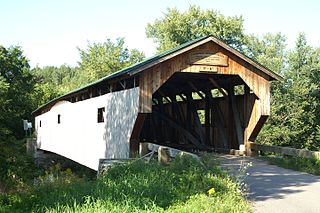
The Poland Covered Bridge, also known as the Junction Covered Bridge or the Cambridge Junction Covered Bridge is a covered bridge that carries Cambridge Junction Road across the Lamoille River off State Route 15 in Cambridge, Vermont. It was listed on the National Register of Historic Places in 1974. The bridge is of Burr arch design, built by George W. Holmes in 1887.
21. Statue of John Bridge
The John Bridge Monument, in the northeast corner of the Cambridge Common in Cambridge, Massachusetts, was given by Samuel James Bridge in honor of his ancestor John Bridge (1578–1665) and sculpted by Thomas R. Gould.
22. Cambridge Meetinghouse
The Cambridge Meetinghouse, also known locally as the Old Brick Church is a historic meetinghouse at 85 Church Street in Jeffersonville, the main village of Cambridge, Vermont. Built in 1826 as a union church for several denominations, it began use as the local town hall in 1866, a use that continued to 1958. It was listed on the National Register of Historic Places in 1981. It presently houses the local post office.
23. Grist Mill Covered Bridge
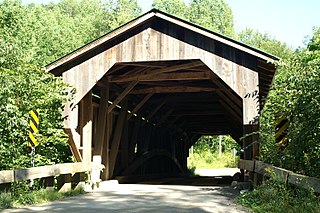
The Grist Mill Covered Bridge, also known as the Scott Covered Bridge, the Bryant Covered Bridge, and the Canyon Covered Bridge, is a covered bridge that carries Canyon Road across the Brewster River, off Vermont Route 108 in Cambridge, Vermont. Built in the 19th century, it is one of a small number of surviving Burr arch truss bridges in the state, and is one of three left in Cambridge. It was listed on the National Register of Historic Places in 1974.
24. Gates Farm Covered Bridge
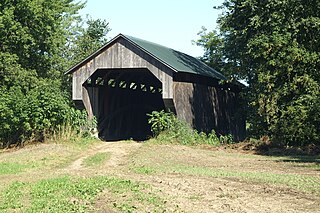
The Gates Farm Covered Bridge is a covered bridge that crosses the Seymour River off State Route 15 in Cambridge, Vermont. Built in 1897, it is last bridge to be built during the historic period of covered bridge construction with the Burr arch design. It was listed on the National Register of Historic Places in 1974.
25. Transparent Horizon
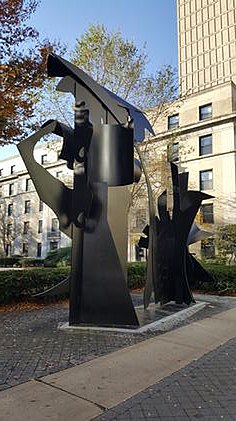
Transparent Horizon is a 1975 black Cor-ten steel sculpture by Louise Nevelson, installed on the Massachusetts Institute of Technology campus, in Cambridge, Massachusetts, United States. The artwork was among the first funded by MIT's "Percent-For-Art" program, which allocates $500,000 for art commissions for new architectural renovations on campus. The sculpture is an amalgam of two of Nevelson's previous works, Tropical Tree IV and Black Flower Series IV. The sculpture has been the target of vandalism.
26. Edwin Abbot House
The Edwin Abbot House, also known as the Zabriskie House, is an historic house at 27 Garden Street in Cambridge, Massachusetts. Built in 1889 to a design by Longfellow, Alden & Harlow, it is a prominent local example of residential Richardsonian Romanesque architecture. It has served as the principal building of the Longy School since 1937. It was listed on the National Register of Historic Places in 1979, and included in the Follen Street Historic District in 1986.
27. Edward Dodge House
The Edward Dodge House is a historic house at 70 Sparks Street in Cambridge, Massachusetts. The 2+1⁄2-story wood-frame house was built in 1878 to a design by Longfellow and Clark. It has asymmetrical massing typical of Queen Anne styling, and also has a style of half-timbering on its upper levels that was popular in England in the 1860s. The exterior surfaces have a variety of textures, create by different sheathing types, including vertical boards, wood paneling, and brick patternwork.
Wikipedia: Edward Dodge House (Cambridge, Massachusetts) (EN)
28. Galaxy: Earth Sphere
Galaxy: Earth Sphere is a 1989 fountain and sculpture by Joe Davis, installed in Kendall Square, Cambridge, Massachusetts, United States. The artwork was designed to emit streams of low-temperature steam from time to time, but the pipes sourcing this emission have been broken for some time.
29. University Park Common
University Park at MIT is a mixed-use urban renewal project in Cambridge, Massachusetts, United States, occupying land near Central Square between the Massachusetts Institute of Technology (MIT) campus and the primarily residential neighborhood of Cambridgeport. It is a joint project of the City of Cambridge, MIT, and Brookfield Asset Management. It is not part of the MIT campus.
Share
How likely are you to recommend us?
Disclaimer Please be aware of your surroundings and do not enter private property. We are not liable for any damages that occur during the tours.
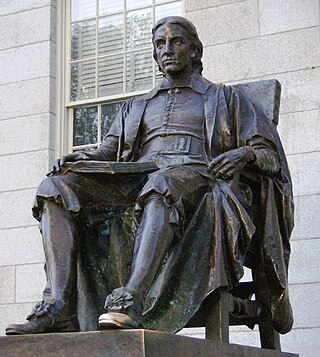
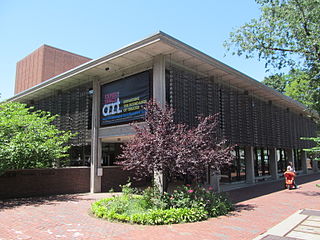
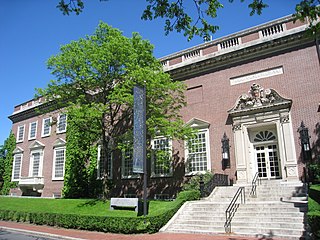
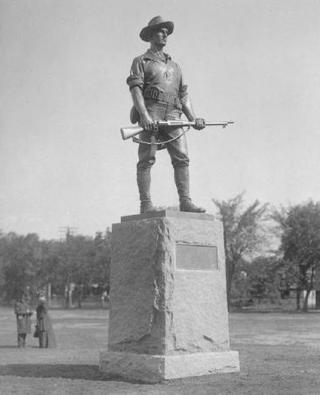
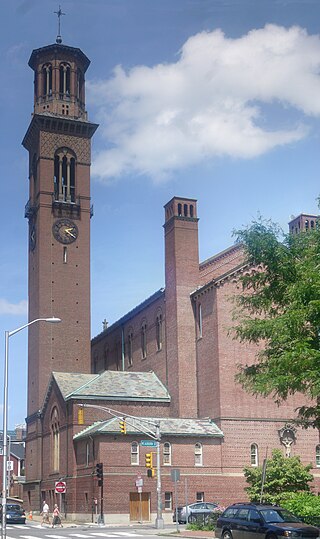
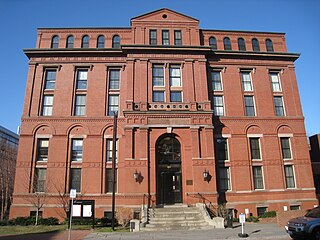
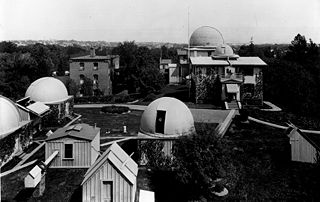
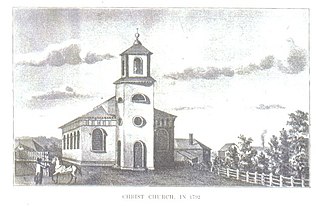
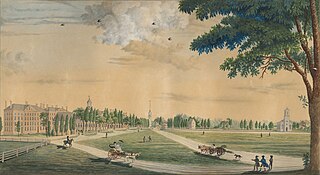
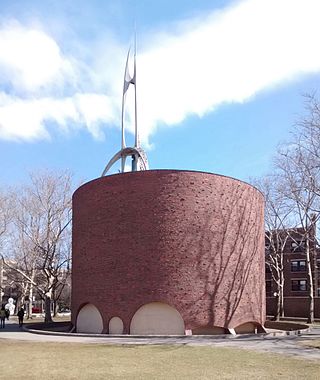
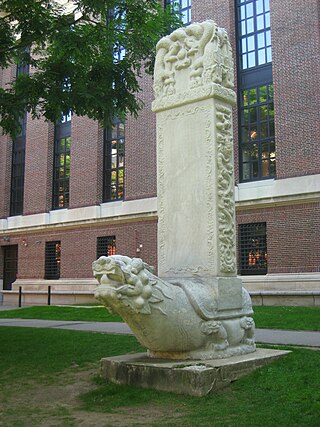
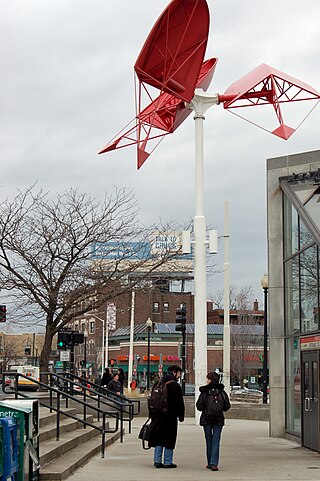
.jpg)
